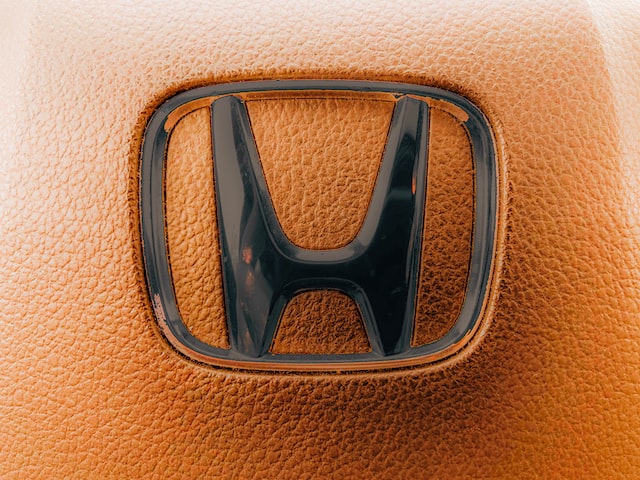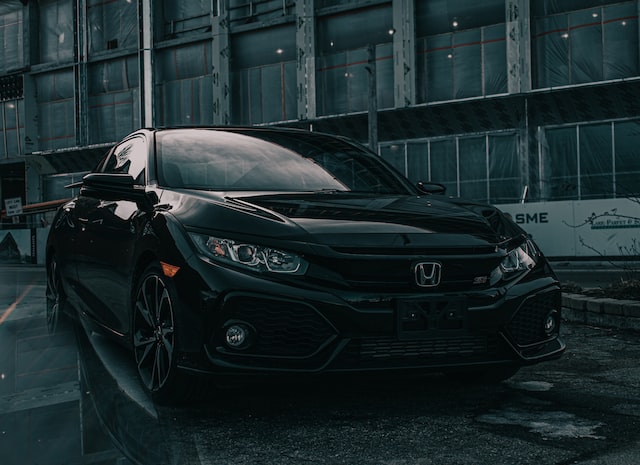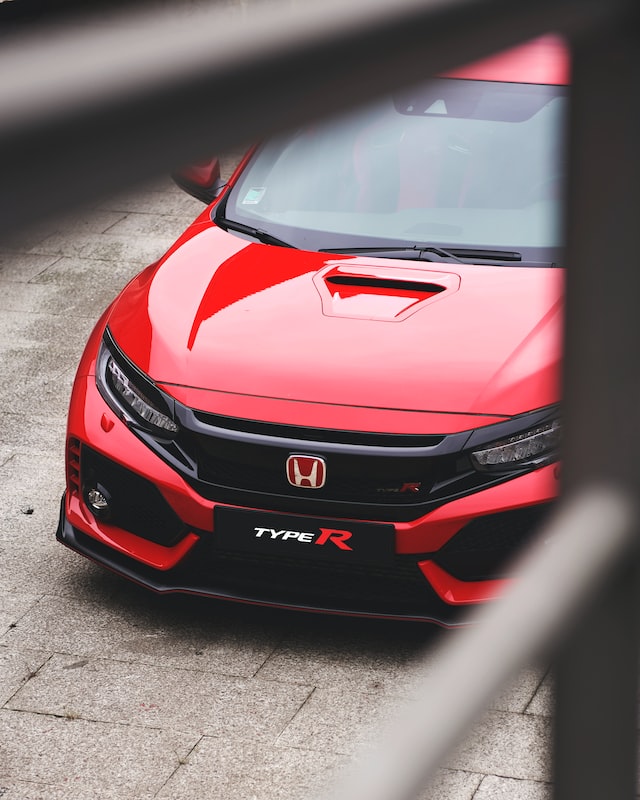Soichiro Honda was born in Shizuoka Prefecture in 1906 and came to Tokyo from the countryside in 1922 to be apprenticed to an automobile repair shop. In 1934 he closed the garage and established Tokai Precision Machinery Company, which produced piston rings and was the main buyer of Toyota's products. In 1946 he founded the Honda Technical Research Institute and began producing motorbikes; in 1971 he resigned as chairman and handed over the management of the company to the Kawashima preference. Soichiro, who had only a primary school education, was able to spend a lifetime of hard work and effort in a complex environment, and then unstintingly handed it over to a young man who was not even remotely related to him, and lived a quiet life himself, something that no one without guts could have done.

Honda is a multinational motor vehicle manufacturer listed on both the Tokyo Stock Exchange (TYO) and the New York Stock Exchange (NYSE).
The company's name comes from its founder Soichiro Honda (1906-1991), and the English name "Honda" is a transliteration of the Japanese word "ほんだ".
Honda is ranked 21st on the 2019 Interbrand Global Top 100 Brands list and 39th on the 2020 Fortune Global 500.
Honda's current product line consists of four main businesses: automobiles, motorbikes, power products and aircraft, with the automotive business consisting of the core brand Honda and the luxury brand Acura.

Honda's vehicle sales in 2019 were approximately 4.83 million units, ranking seventh in the world ; of which, the Chinese market contributed sales of approximately 1.55 million units, accounting for approximately one-third of the total . 2019 Honda's joint ventures in China, Dongfeng Honda Automobile Co. and Guangzhou Automobile Honda, ranked eighth and tenth, respectively, in domestic passenger vehicle sales .
On April 25, 2021, Honda Motor CEO Toshihiro Mibe said the company plans to increase the sales ratio of electric vehicles (EVs) and fuel cell vehicles (FCVs) to 100 percent by 2040 .

The Honda Legend: Building the future with people.
Honda's approach to business is flexible. The Honda branch in the United States, established in 1991, had overtaken Chrysler Motors to rank third in the US market in terms of sales.
Honda's Accord and Civic cars have been voted the best quality and most popular cars by customers for many years. In Europe, Honda has also established a branch in the UK. Honda has produced up to approximately 3 million vehicles.
Honda started out in 1948 with the production of bicycle-assisted engines, and in 2012 Honda has grown into a company with original technology in all areas, from small general-purpose engines, to scooters and even sports cars, and is constantly developing and producing new products.

Since the beginning, Honda has been developing its business based on the concept of "Satisfying customers around the world".
In 2012, Honda had more than 120 production sites in 29 countries around the world, in addition to Japan, and its products include motorbikes, automobiles and general products, which are used by more than 17 million customers every year. At the same time, Honda is also active in fulfilling its social obligations as a corporate citizen, actively exploring solutions for environmental protection and safety.
Honda Technical Research Institute is a leader in the automotive industry in Japan and the world, and has a great influence in the world. In Japan, Honda is synonymous with technology and dynamism, and is a highly sought-after career destination for many university graduates. Honda is also committed to research into new energy vehicles.
In the 1980s, Honda set up a logo design research group and, from more than 2,500 designs from around the world, settled on a three-string speaker-style logo, the "H" with a frame, in which the H is the first letter of the English word "Honda". The first letter of Honda. The logo reflects the technical innovation, solidity of the workforce and management, as well as a sense of tension and relaxation.
Soichiro Honda founded Honda Giken Kogyo in 1946 and used his surname as the name and trademark of the company.

The "H" is a pictorial trademark for "Honda" cars and "Honda" motorbikes, and is the Japanese pinyin for "Honda". Honda" is the first capital letter of the Japanese pinyin for "HONDA". The letters "HM" in the Honda motorbike trademark are an abbreviation for "HONDAMOTOR", with the wings of an eagle on top of the two letters, symbolising "Honda's leap forward in technology and Honda's promising future. ".
Honda's direction is "harmony between people and cars, cars and the environment"; Honda's style is sporty, luxurious and smooth; Honda's technical goal is to design engines with high power, low fuel consumption and low pollution. The "H" trademark, a world famous trademark, is the foundation of Honda's business and the soul of Honda's success.

First used on the S500 sports car in 1960, the "H" mark accompanied Honda's racing cars to victory in the 1965 World Formula 1 race in Mexico and the F2 race the following year. Honda's glory came in 1967 when it won the Italian Grand Prix in Formula One.
In 1969, Honda used the long, vertical "H" trademark to highlight the image of the eagle, and in 1980, in order to reflect Honda's youth, advanced technology and innovative design, it was decided to use the "H" trademark, which resembled a three-string speaker, and the trademark put The logo embodies technological innovation, solidarity, management strength, tension and relaxation.

HondaMotor is the Peter Pan of the automotive industry - a company that refuses to grow up. As the world's youngest and one of the few major car manufacturers to remain independent, Honda has always preferred to do things its own way. Firmly committed to its founder's culture of independence and fast action, Honda has boldly stuck to its own path in terms of global strategy, product concepts and sustainable use of resources. While habitual thinking drove car manufacturers to run in one direction, Honda took note of this and turned in a different direction.

This strategy has worked well for Honda since its birth as a motorbike manufacturer in 1948. Honda has a 15% market share in Japan, more than Nissan and second only to Toyota. In North America, which accounts for almost two-thirds of Honda's operating profit, Honda has built a fifth car assembly plant and is attacking the light truck market, the last bastion of the "Big Three" carmakers. It also has a significant presence in new fuels. While other car manufacturers are wrestling with mileage and emissions, the two issues that will dominate the 21st century automotive industry, Honda is already leading in both areas.